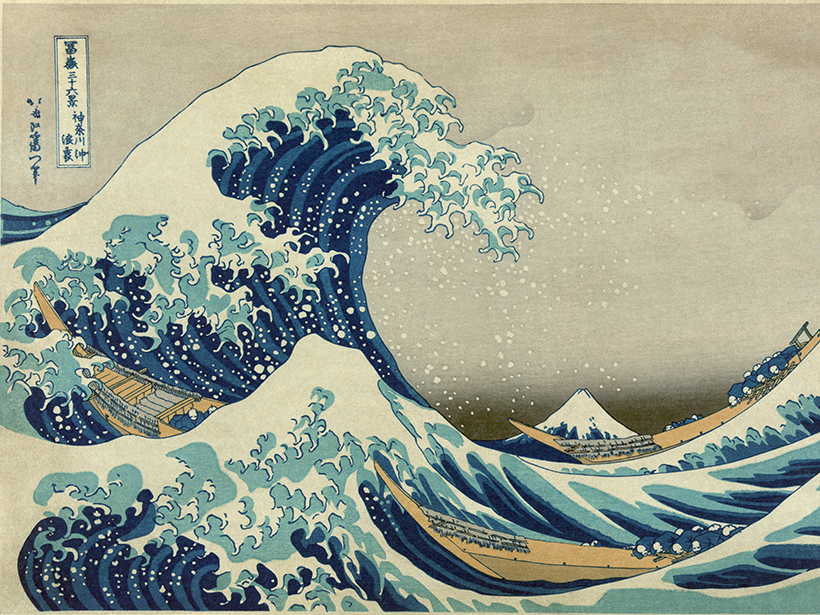Nonlinear waves, although extremely difficult to fully explore either with mathematics or by computer simulation, are everywhere in modern civilization and in nature. An example of a man-made nonlinear wave is the sonic boom associated with a supersonic jet fighter. Waves crashing on a beach is another example of a nonlinear wave. “Chaos” deals with nonlinear things that are effectively impossible to predict or control, like turbulence, hurricanes, the stock market, etc. Nonlinear waves and chaos occur throughout plasma physics and geophysics.
A workshop earlier this year convened experts who spoke on various aspects of this topic. The main purpose of the Nonlinear Wave and Chaos Workshop 2017 (NWCW17) was to gather from various scientific fields a mix of experts in nonlinear waves, chaos, wave dissipation, dispersion, and related topics. Attendees included scientists with expertise in space plasma, laboratory plasma, fusion, the atmosphere and ionosphere, astrophysics, applied mathematics, and oceanography. There was even a heart specialist, who had applied to attend.
This workshop was the 10th in a series that started in 1994 in Kyoto, Japan. The format of these workshops, which are held every 2 or 3 years, is considerably different than standard workshops. We try to have a good mix of graduate students, postdocs, midcareer scientists, and senior scientists.
One talk was on rogue ocean waves; another talk was on cardiac arrhythmia.
All talks were invited, and we encouraged questions during the 45-minute talks. To keep audience attention high, we intentionally mixed the subject matter of consecutive talks, so, for example, an atmospheric talk would follow an astrophysics talk. This format works best with a limited number of attendees, so we set an upper limit of 35 attendees. Attendance was by invitation only, and attendees were selected to represent a wide variety of scientific disciplines. Discussions were friendly and informal in nature. Scientists from 12 countries came and presented talks whose authors came from 15 countries.
Two highlights of the meeting illustrate the meeting’s content and diversity. One talk was on rogue ocean waves (also called extreme storm waves). Predicting the occurrence of rogue waves could help save lives and property. Another talk on cardiac arrhythmia covered experimental and theoretical approaches. The speaker discussed the multiple electrical spiral waves associated with heart arrhythmia, a discovery that opens up a potential avenue to suppressing such arrhythmias.
The only goals of the meeting were to advance science among the attendees and to offer an opportunity for the scientists to network together.
All attendees gave talks, and we encouraged them to present cutting-edge, even controversial, work. Everyone had the opportunity to present their newest work among the variety of experts in attendance and get feedback, and the presenters could get new ideas from the other talks. The only goals of the meeting were to advance science among the attendees and to offer an opportunity for the scientists to network together.
The talks will be published in a special issue of Nonlinear Processes in Geophysics (jointly run by the American Geophysical Union (AGU) and the European Geosciences Union). In future workshops, we want to extend the scientific scope further, perhaps including solid Earth scientists or other areas of interest to geophysicists.
We thank the other NWCW17 organizers who assisted in preparing this meeting report: Gurbax Lakhina, Masahiro Hoshino, Juan Valdivia, and Yasuhito Narita. A copy of the program and email addresses of individual speakers can be obtained from any of the organizers; the full contact information of the organizers is on the NWCW17 website.
Portions of this work were performed at the Jet Propulsion Laboratory, California Institute of Technology, under contract with NASA. The workshop was endorsed by AGU’s Space Physics and Aeronomy section and the Nonlinear Geophysics focus group, the American Institute of Physics’s Division of Plasma Physics, the European Geosciences Union’s Nonlinear Processes in Geophysics Division, and the Japan Geoscience Union.
—Bruce Tsurutani (email: [email protected]), Jet Propulsion Laboratory, California Institute of Technology, Pasadena; George Morales, University of California, Los Angeles; and Annick Pouquet, University Corporation for Atmospheric Research, Boulder, Colo.
Citation:
Tsurutani, B.,Morales, G., and Pouquet, A. (2017), Tackling chaos and nonlinearity with order and straight talk, Eos, 98, https://doi.org/10.1029/2017EO082507. Published on 27 September 2017.
Text © 2017. The authors. CC BY 3.0
Except where otherwise noted, images are subject to copyright. Any reuse without express permission from the copyright owner is prohibited.

